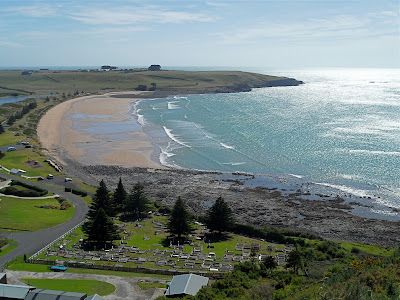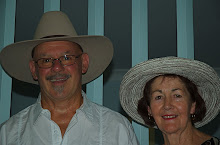At the entrance to the free camp at Gowrie Park is this giant poster board with a mural depicting the view from this point prior to settlement in the area.
We are surrounded by peaks at Gowrie Park. This is the road into town from the camp area. Gowrie Park was a 'hydro' town and boasted a population of many hundreds during the construction phase of the hydro scheme but now there are the residents of two homes.
Another of the peaks behind the hydro office.
Yet another of the peaks behind the only two remaining homes here.
A Bucket Wheel from one of the power stations. There are two buckets on each blade that are each driven by nozzles ejecting water with a 300 metre head of pressure. The turbine drives an alternator producing 15000 amps of power.
This is only part of a mural on the back wall of the Hydro Maintenance Workshops.
Looking over O'Neill's Creek into the free camping area.
The beginning of our hike around Dove Lake. The sky is clear and sunny but the air is still crisp.
Further around and the mountain is still imposing it's presence.
Along the way we came across this wallaby that seemed unperturbed by the large number of walkers on the track.
The Boat shed beside the crystal clear waters of Dove Lake with the mountain still there in the background. Two hours after our departure and the temperature has changed, everyone is shedding clothes by this stage.
After a quick lunch we took the shuttle bus out to Ronny Creek to begin the two hour walk back to the Ranger Station. The entire walk is on the boardwalk, very easy.
This is Ronny Creek.
There are large areas of this low shrubby fern.
Jude walking the plank down to Ronny Creek.
An entire 'meadow' of Button Grass. This, you will recall is what adds the tannin colour to all the water in the creeks and rivers.
Very near the end of this lovely walk. When we got back to the car and started driving home to the camp we discovered that the temperature had risen to 20 C.
Lake Barrington, the home to a lot of water sports. Although it is very pretty here we only stayed one night as there is no where to walk. You can see by the photo that the banks go steeply into the water, it's like this all the way around.


























































